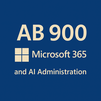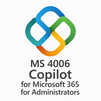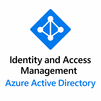
MB-240: Microsoft Dynamics 365 for Field Service Associate training provides comprehensive knowledge to streamline field operations through Dynamics 365 Field Service. Learners explore key areas such as Work Order management, resource scheduling, inventory control, service agreements, customer asset tracking, and mobile app usage. The course also introduces IoT integration and advanced scheduling. Perfect for field service professionals, consultants, and system administrators, it prepares candidates for the MB-240 certification and enhances service delivery capabilities.
MB-240 Microsoft Dynamics 365 for Field Service Associate Training Interview Questions Answers - For Intermediate
1. What are the main components of a Work Order?
A Work Order typically includes components like service account, primary incident type, products and services to be delivered, service location, assigned resources, estimated duration, and priority. It also contains details of related customer assets, billing information, and status updates, which together ensure all aspects of the service request are managed effectively.
2. What are Work Order Types, and why are they important?
Work Order Types categorize different kinds of service work, such as installation, repair, or inspection. Defining Work Order Types helps in standardizing processes, applying appropriate business rules, and generating consistent reports. It also ensures that each type of Work Order follows the correct flow, from creation to completion.
3. How do Resource Requirements influence scheduling?
Resource Requirements specify the necessary skills, certifications, territories, and availability needed for a particular Work Order. These requirements guide the scheduling engine or dispatcher in selecting the most suitable technician or resource for the job. Accurate Resource Requirements lead to better scheduling outcomes and higher service quality.
4. How does the Field Service mobile app support offline mode?
The Field Service mobile app supports offline mode by allowing technicians to download Work Orders, asset data, and customer information in advance. While offline, technicians can update job status, enter notes, capture photos, and complete forms. Once back online, the app syncs all data with the main system, ensuring continuity.
5. What is the purpose of Work Order Sub-Statuses?
Sub-Statuses provide more granular tracking of a Work Order’s progress within each major status (Open, In Progress, Closed). For example, within “In Progress,” sub-statuses could include “Technician En Route” or “Awaiting Parts.” This allows for better visibility, reporting, and communication with customers regarding job progress.
6. What are Characteristics in Field Service, and how are they used?
Characteristics define specific skills or certifications a resource may have, such as HVAC certification or electrical expertise. These are used in scheduling to ensure only qualified technicians are assigned to Work Orders that require particular skills, which improves service quality and compliance.
7. Explain how Field Service handles preventive maintenance.
Preventive maintenance is managed through Agreements, which define recurring service schedules. These Agreements automatically generate Work Orders at predefined intervals, helping organizations maintain customer equipment proactively, reduce breakdowns, and enhance customer satisfaction. Preventive maintenance ensures service consistency and extends asset lifecycles.
8. What is the use of a Resource Pool in scheduling?
Resource Pools group multiple Bookable Resources under one entity. This allows dispatchers to assign Work Orders to a pool rather than to a specific technician, enabling more flexible scheduling. Members of the pool can then be scheduled based on availability, skills, and workload.
9. How does Field Service handle customer communications?
Field Service integrates with Dynamics 365 Customer Engagement to automate communications like appointment reminders, service updates, and post-service surveys. Notifications can be sent via email or SMS, keeping customers informed at each stage of service delivery and enhancing their overall experience.
10. What is a Service Task, and how is it used?
Service Tasks are individual actions or steps that need to be performed as part of a Work Order. They help guide technicians through the service process, ensure that all necessary steps are completed, and provide a checklist for quality assurance. They also enable detailed reporting on job execution.
11. How are Entitlements used in Field Service?
Entitlements define the scope of services a customer is entitled to under warranty or service agreement terms. They control what services are covered, how many incidents are allowed, and any discounts that apply. When creating a Work Order, Entitlements are checked to determine coverage and billing rules.
12. What is the importance of using Resource Bookings?
Resource Bookings link Work Orders to the technicians scheduled to perform them. They store information such as booking duration, start and end times, and travel details. Resource Bookings drive technician calendars and route planning, providing clear visibility into who is doing what, when, and where.
13. How does Field Service manage product returns?
Field Service supports Return Merchandise Authorization (RMA) processes to manage product returns, exchanges, or repairs. RMAs can be created from Work Orders, and the system tracks the return lifecycle — from initiation through shipment and receipt — ensuring accurate inventory management and customer service.
14. What are Organizational Units in Field Service?
Organizational Units represent divisions or branches of a service organization. They help segment the workforce, inventory, and operations geographically or functionally. Assigning resources and Work Orders to the correct Organizational Units allows for better reporting, cost tracking, and compliance with local business rules.
15. How does Field Service handle reporting and analytics?
Field Service leverages built-in dashboards and Power BI integration to provide insights into key metrics like first-time fix rates, technician utilization, Work Order aging, and customer satisfaction. These analytics help managers optimize operations, identify trends, and drive continuous improvement in service delivery.
MB-240 Microsoft Dynamics 365 for Field Service Associate Training Interview Questions Answers - For Advanced
1. How does Dynamics 365 Field Service support complex multi-resource scheduling?
Field Service supports complex scheduling scenarios through Resource Requirements that can define not just individual resources but also crews, facility-based resources, or multiple technicians required for a single job. It uses resource pools, crew management, and requirement groups to handle jobs that need a specific team composition. The Schedule Board displays these multi-resource bookings visually, helping dispatchers coordinate them. Crew leaders can also be assigned to oversee execution. This capability is crucial for industries such as utilities, construction, and manufacturing, where large-scale service tasks or installations require coordinated team efforts.
2. How do Work Order sub-grids enhance data management within the system?
Sub-grids in Work Orders allow embedding related entities such as Service Tasks, Products, Services, and Characteristics directly on the Work Order form. This provides a unified view where technicians and dispatchers can manage all aspects of a Work Order without navigating away. For instance, a technician can review all parts required, check associated service tasks, or verify necessary skills from a single screen. Sub-grids improve user experience, reduce data fragmentation, and ensure that service processes are executed consistently.
3. What is the role of Work Order life cycle management, and how is it configured?
Work Order life cycle management defines the various stages a Work Order goes through, from creation to closure. Organizations can configure status reasons (Open - Unscheduled, Scheduled, In Progress, Completed, Posted, Closed), sub-statuses, and associated business processes. Business Process Flows (BPFs) can guide users through required steps in each stage. Workflows or Power Automate flows can automate status transitions based on conditions (such as technician completing a job). Proper life cycle management ensures traceability, compliance with SLAs, and accurate reporting of service performance.
4. How does Field Service manage warranties and returns for customer assets?
Field Service allows tracking of warranty terms at the asset level, including start/end dates and coverage (labor, parts, travel). During Work Order creation, the system checks the asset’s warranty status and applies appropriate billing rules. For defective products or incorrect installations, Return Merchandise Authorization (RMA) processes can be initiated to manage returns or replacements. RMA processes support full tracking — from request approval to shipment and final resolution. This automation minimizes revenue leakage, ensures compliance with warranty obligations, and improves customer trust.
5. How does integration with Dynamics 365 Sales drive service revenue?
Integration with Dynamics 365 Sales helps Field Service organizations identify cross-sell and upsell opportunities during service interactions. For example, technicians can view open opportunities while onsite and suggest new products or extended service contracts. Sales teams can receive leads from Field Service when equipment is nearing end of life or when customers express new needs during service. Automated lead generation based on asset telemetry or Agreement expiration ensures a proactive approach. This alignment between service and sales drives recurring revenue and enhances customer lifetime value.
6. What security roles and permissions are critical in Field Service?
Field Service includes out-of-the-box security roles such as Field Service Administrator, Dispatcher, Resource (Technician), and Field Service App User. Security roles control access to key entities like Work Orders, Bookings, Inventory, and Customer Assets. It’s critical to enforce least-privilege access — technicians should only access their assigned Work Orders and territory data. Dispatchers need broad scheduling access, while administrators manage configuration and reporting. Field-level security can further protect sensitive data such as customer contact details. Well-structured security ensures data privacy, compliance, and operational integrity.
7. How do Service Territories improve scheduling efficiency?
Service Territories define geographic areas covered by specific resources. Associating technicians with territories helps optimize travel and reduce response times. During scheduling, only resources associated with the Work Order’s territory are suggested, which enhances scheduling accuracy. It also supports regional workload balancing and reporting. Territories can be hierarchical (country → region → city), enabling flexible scheduling at various levels. This feature is particularly valuable for large service organizations operating across multiple regions or countries.
8. How can Power Automate be used to extend Field Service processes?
Power Automate allows creating low-code workflows that enhance or automate Field Service processes. For example, you can trigger automatic email notifications when a Work Order is created or closed, generate an invoice upon Work Order posting, or update inventory upon product consumption. Power Automate can also integrate Field Service with third-party applications — such as sending SMS updates to customers, creating Teams notifications, or updating ERP systems. This extensibility bridges gaps between Field Service and the wider enterprise ecosystem, driving operational agility.
9. What is the impact of first-time fix rates (FTFR), and how can they be optimized?
First-time fix rates are a critical KPI that directly impacts customer satisfaction, cost efficiency, and profitability. High FTFR reduces repeat visits, saves travel costs, and enhances brand reputation. To optimize FTFR, organizations should implement robust asset history tracking, maintain accurate inventory, standardize Work Order templates, and train technicians continuously. IoT integration for proactive diagnostics and AI-driven scheduling also contribute. Power BI dashboards can monitor FTFR trends and root causes of repeat visits, driving ongoing process improvement.
10. How can Dynamics 365 Field Service support multi-language, multi-currency, and global operations?
Field Service supports multi-language labels, forms, and email templates through Dynamics 365’s standard localization features. Currency settings allow Work Orders, pricing, and invoices to reflect customer-specific currencies. Multi-geo and multi-region implementations can segment operations using Business Units, Service Territories, and Organizational Units. Global organizations can standardize core processes while allowing for regional variations in regulatory compliance, tax handling, and service practices. Combined with Azure AD for identity management and Microsoft’s cloud security certifications, Field Service is well-suited for complex global operations.
11. How can Dynamics 365 Field Service enable sustainability initiatives?
Field Service contributes to sustainability in several ways. Optimized scheduling reduces technician travel and carbon emissions. Connected Field Service enables proactive maintenance, extending asset lifespans and reducing waste. Predictive analytics helps minimize unnecessary part replacements. Paperless mobile processes reduce the need for printed service reports. Many organizations leverage Field Service data to report on environmental KPIs — such as CO2 savings from remote monitoring versus onsite visits. Thus, Field Service aligns with corporate ESG (Environmental, Social, Governance) goals.
12. How does integration with customer portals improve service experience?
Integration with customer portals (via Power Pages or third-party solutions) enables self-service capabilities. Customers can log service requests, track Work Order progress, view upcoming appointments, and access asset histories. They can also update contact details or provide feedback. This transparency improves trust, reduces call volumes, and enhances the customer experience. Portals can also integrate with Connected Field Service to display IoT-based health data. Personalizing portal content based on customer entitlements and Agreements further elevates the service value proposition.
13. What is the significance of Product Inventory Journals?
Product Inventory Journals track changes in inventory levels — such as adjustments, transfers, and usage. They provide a complete audit trail of stock movements across warehouses and mobile inventory (technician vans). This enables accurate inventory valuation, compliance with financial regulations, and improved forecasting. During service, technicians’ product usage automatically generates inventory journals, ensuring real-time visibility. These journals also integrate with Dynamics 365 Finance for end-to-end inventory reconciliation and accounting, supporting robust inventory governance.
14. How can AI-driven forecasting improve resource planning?
AI-driven forecasting uses historical service data, seasonal patterns, and predictive models to anticipate service demand. It helps managers plan resource capacity (technicians, parts, equipment) more accurately. For example, predictive maintenance models can estimate likely failure rates in specific assets, informing resource allocation. Demand forecasting feeds into scheduling optimization, ensuring balanced workloads. AI models can also suggest hiring plans or training needs based on forecasted demand. This strategic planning capability allows service organizations to operate proactively, not reactively.
15. What are best practices for deploying Dynamics 365 Field Service in large enterprises?
Successful Field Service deployments in large enterprises require a phased, value-driven approach. Initial discovery should align business goals with system capabilities. Strong data governance (for assets, territories, Work Orders, and resources) is critical. Integration with ERP, CRM, and IoT platforms should be carefully scoped. Change management and technician training are vital for adoption. Regular review of KPIs — such as FTFR, utilization, and SLA compliance — drives continuous improvement. Leveraging the Power Platform for extensibility ensures that Field Service remains agile and adaptable as business needs evolve.
Course Schedule
| Dec, 2025 | Weekdays | Mon-Fri | Enquire Now |
| Weekend | Sat-Sun | Enquire Now | |
| Jan, 2026 | Weekdays | Mon-Fri | Enquire Now |
| Weekend | Sat-Sun | Enquire Now |
Related Courses
Related Articles
- Understanding responsibilities of a process engineer - Process Engineering Online Training
- How Customization Can Boost Your Company's Productivity and Efficiency in Microsoft Dynamics 365?
- Understanding Red Hat’s OpenShift
- How AWS Machine Learning Certification Boosts Your Career?
- What is the easiest way to become a PingFederate Professional?
Related Interview
Related FAQ's
- Instructor-led Live Online Interactive Training
- Project Based Customized Learning
- Fast Track Training Program
- Self-paced learning
- In one-on-one training, you have the flexibility to choose the days, timings, and duration according to your preferences.
- We create a personalized training calendar based on your chosen schedule.
- Complete Live Online Interactive Training of the Course
- After Training Recorded Videos
- Session-wise Learning Material and notes for lifetime
- Practical & Assignments exercises
- Global Course Completion Certificate
- 24x7 after Training Support










 Join our Live Instructor-Led online classes delivered by industry experts
Join our Live Instructor-Led online classes delivered by industry experts